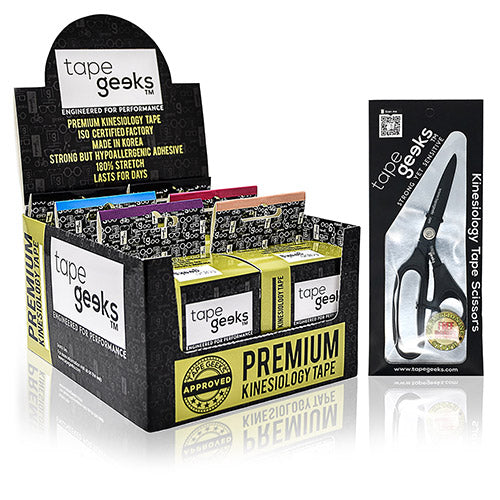
NFL Season is back!
With the spiking interest in football, ever wondered how your favorite athletes seem indestructible play after play? From their training to their games, these athletes are prone to injuries because of the force, speed, and agility required from the sport.

Shop our bundles now
Shop Now
Let’s break down the common injuries in gridiron football, most commonly known as American football, and what you can do to minimize or prevent them from happening.
10 Common injuries in the NFL
Here are the top 10 most common injuries in the NFL:
1. Concussions
Most likely to happen during tackles, play-related head blows are one of the most common injuries in the sport. Left untreated, this usually results in depleting symptoms like memory loss, anxiety, depression, stress, headaches, and sleep disturbances.
2. Wrist and hand injuries
Whether you’re catching a ball or falling on the ground with your hands trying to stop the fall, a lot of things can happen to cause injuries on the wrists and hands whether it’s jammed fingers, scaphoid fractures, skier’s thumb, or a wrist ligament tear.
3. Jumper’s knee
Constant jumping and landing on the turf cause stress on the athlete’s knees. Also known as patellar tendonitis, the repetitive stress in the tendon that connects your kneecap to your shinbone can have damaging effects after quite some time.
4. Shin splints
No matter what position you’re playing, you would need to sprint, run and sometimes tackle or be tackled. The force needed to do these things brings stress to the muscles, tendons, and ligaments around the shinbone which causes tibial stress syndrome or shin splints.
5. Achilles Tendonitis
As your largest tendon in the body connects your calf muscles to your heel, your Achilles tendon can support your whole body weight and keeps you stable. For athletes, the chances of overextending can weaken this tendon and may eventually cause inflammation making it less stable.

Shop our collection now
Shop Now
6. Ankle sprains
No matter how hard you train, one wrong pivot and your ankle gets the beating especially when you’re rushing downfield. Making quick lateral movements to avoid opposing players takes a toll on your ankles and may lead to sprains.
7. Knee ACL injuries
A tornACL is one of many athletes’ nightmares and is usually coined as a career-ending injury. The injury usually happens when the athlete rotates their body while the foot is planted on the ground while their weight is on the planted foot. When doing this, the force and stress are absorbed by the ACL.
8. Quadriceps strains
As one of the largest and strongest muscles in the body, your quads take a lot of pressure more so for athletes who constantly train and work out. Muscle strains in the quadriceps usually occur when you overstretch or pull the muscle.
9. Shoulder dislocations
Either tackle or be tackled - this is an inevitable part of the game. Even with all the padding to prevent shoulder dislocations, if too much force and impact have been made, your shoulders are bound to take a hit. This is when the humerus pops out of your scapula.
10. Hip pointers
As a sport with a lot of tackling and falling, your hips are not exempted from damage. It’s a bruise or pain on the hip from a direct hit or a sudden fall. More than any normal bruise, it usually makes simple activities like walking or laughing painful. Unlike most bruises, hip pointers would require treatment to hasten the healing process.

Shop our kinesiology tape now
Shop Now
How to prevent football injuries
Here are 4 things that you can do to prevent football injuries:
1. Strength training
For your body to endure this type of pressure, strength training is key in building your muscles and keeping up with the high demand of the sport. It is best to consult a professional on your strength training as this also requires proper form and progression.
2. Wearing the right gear
Like a soldier preparing for battle, you can’t fight unprepared. You have to make sure your gear is of good quality and fits you like a glove. The right protection lessens the force of the impact on your body.
3. Risk assessment
One of the important football skills to survive and win is being able to gauge your risks while on the field. Plays are good but your ability to think on your feet when the play doesn’t work out can take your game to another level. Being able to undertake specific aggressions and not push for certain ones gives you a good judgment of possible liabilities.
4. Muscle, joint, and tendon support
While some use compression garments like socks or arm sleeves, some athletes prefer kinesiology tapes or turf tapes because of various advantages:
- Lessens the risk for turf burns as it adheres to your skin
- Customizable
- Sweat-proof
- Water-resistant
- Hypo-allergenic
- Prevents/relieves muscle spasms and cramping
- Reduces swelling and inflammation
- Improves blood and fluids circulation
- Reduces the risks of injury
Know more about how you can use kinesiology tapes for your next football game, check out our article about kinesiology taping for common football injuries.
Conclusion
Whether you’re already a pro or would like to start your career in football or know someone who plays the sport, best to know the risks of the sport. If symptoms persist, best to consult your physician.
Now that you know more about the common injuries and ways to minimize them through kinesiology taping, let’s start your taping journey now!
Check out Tape Geeks kinesiology tapes at our Amazon store to get the best deals.

Shop our accessories and more
Shop Now
Subscribe to the TapeGeeks Newsletter for new videos, discounts and more!Join The Geeks Club









